Mohammad Shah Qajar; The third king of the Qajar dynasty

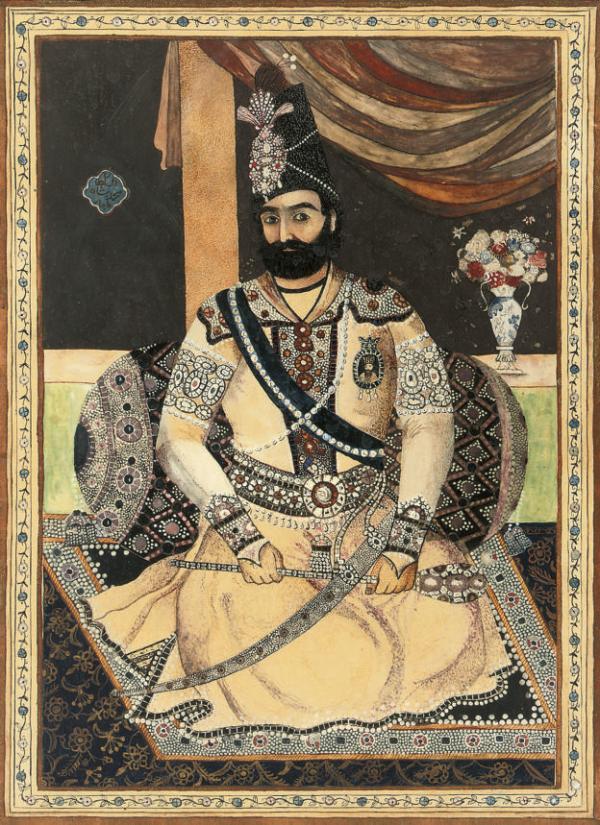 Mohammad Shah Qajar
Mohammad Shah QajarAn abstract of the biography of Mohammad Shah Qajar:
Full name: Mohammad Shah Qajar
Date of birth: 6 Dhu Qadah 1222 AH
Place of birth: Tabriz, Azerbaijan, Iran
Previous: Fath Ali Shah
Successor: Naseruddin Shah
Died: 6 Shawwal 1264 AH at the age of 42
Burial place: Fatima Masoumeh shrine
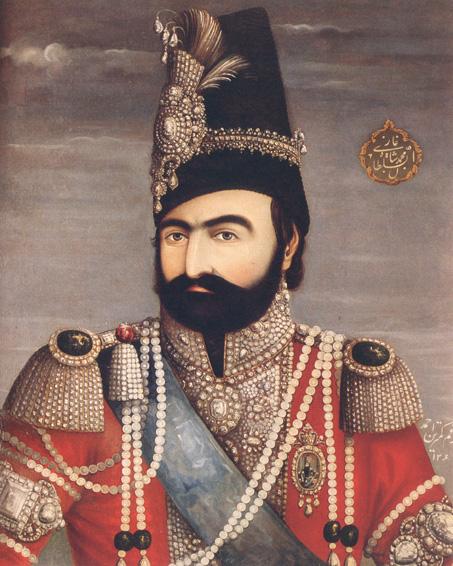 Biography of Mohammad Shah Qajar
Biography of Mohammad Shah QajarBiography of Mohammad Shah Qajar:
Mohammad Shah Qajar was born in Tabriz on the 6th of Dhu Qadah 1222 AH. He is considered the third king of Qajar, succeeded his grandfather Fath Ali Shah. He was the son of Abbas Mirza and was known as the Second Crown Prince until he reached the throne.
Mohammad Mirza lost his mother when he was a child and his father entrusted him to Haji Mirza Aghasi so that his personality would influence him and he would adopt Sufi tendencies. Mohammad Mirza was present in the wars between Iran and Russia, which were led by his father.
Birth and childhood of Mohammad Shah Qajar:
Mohammad Mirza was the eldest son of Prince Abbas Mirza, who was born to a mother named Glin Khanum, the daughter of Mirza Mohammad Khan Qajar Dolo. This king was named Muhammad to honor the memory of Muhammad Khan Qajar and following the interest that Abbas Mirza had for the founder of the Qajar dynasty.
In order to establish a relationship of solidarity between the royal family and the rival factions of the Qajar dynasty, Mohammad Mirza, who was only 12 years old at that time, was called from Tabriz to Tehran to marry the daughter of Mohammad Qasim Khan Zahir al-Dawlah, Malik Jahan Khanum, who was later nicknamed Mahdia. .
This marriage took place in Zal-Qaida in 1234 AH, but it did not take place according to what was predicted. The prince's mother, who was from the Dolo branch, had a cold relationship with her daughter-in-law, who was from the Gwanlu family. On the other hand, the personality difference that existed between Mohammad Mirza and Malek Jahan Khanum caused the distance between this couple, and the continuous death of their babies aggravated the situation day by day. Mohammad Mirza had an introverted character who was very influenced by the opinions of those around him, but Malik Jahan was a very aggressive and domineering lady.
Only two children from this marriage survived to adulthood, one of them was Naseruddin Mirza, who later, the differences between Muhammad Mirza and Malik Jahan Khanum affected the personality of Naseruddin Mirza and his reign. He became the crown prince and then the king of Iran, and the other was Ezzat al-Dawlah, who became the wife of Amir Kabir, the first chancellor of Naser al-Din Shah.
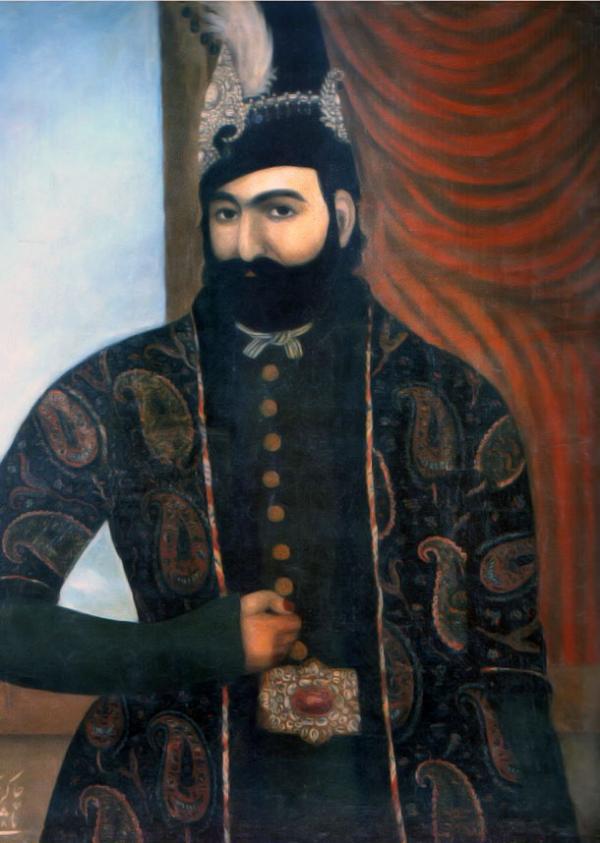 About the life of Mohammad Shah Qajar
About the life of Mohammad Shah QajarEducation of Mohammad Shah Qajar:
Haji Mirza Aghasi, a dervish who had an important influence on Muhammad Shah's Sufi tendencies. During his childhood and youth, Mohammad Mirza was a quiet and shy person who apparently had no ambition for politics. He received the usual court education in Tabriz and became very skilled in calligraphy. However, his academic level is compared to his other brothers, especially Jahangir Mirza and Farhad Mirza, who were under the training of two viceroys (Mirza Isa and later his son Mirza Abul Qasim Farahani, who became Sadr-e-Azami), who made great progress in writing and other sciences. It was limited.
After this time, the fame of a dervish became famous in Tabriz, and Mirza Isa, the viceroy, called him to the court. Mirza Agassi was the same dervish who taught many people. After the death of Mirza Isa, Mirza Abulqasem did not make a vice-regent with Haji, and he left Tabriz after the situation became difficult for him and returned to Khoi.
In 1824, Abbas Mirza called him again to tutor some of his children. Some time later, Aghasi was put under the tutelage of Mohammad Mirza, and it was not long after this incident that his love sprouted in the heart of this teacher.
The prince became a disciple and Haji Murad. It is said that Muhammad Mirza spent some time in rags so that they were known among the people as two dervishes.
Although in Qajar sources Muhammad Mirza's tendency towards Sufism is considered to be the result of his relationship with Haji Mirza Aghasi, Homa Natiq believes that this cannot be the case because before Aghasi, Sufis such as Mohammad Reza Hamdani and Haji Zainul Abdin Shirvani were also the prince's heart. However, the life of a dervish was not very pleasing to Abbas Mirza and Farahani's deputy, in the same way, Abul Qasem Farahani's deputy, the first president of Muhammad Mirza, tried to erase his Sufi beliefs. But it was not successful.
The election of Mohammad Shah Qajar as a provincial governor:
After the death of Abbas Mirza, he was elected as the regent of Iran with the formation of the council of Mohammad Mirza. At this time, he was called to Tehran for the siege of Herat in Khorasan and he went to the capital along with Farahani's deputy to receive his father's positions.
He went to Azerbaijan, but not long after his arrival in Tabriz, Fath Ali Shah passed away. Mohammad Shah moved to Tehran along with Russian and British forces to take his throne. With the death of Fath Ali Shah, there were many rebellions, among them were some of his sons such as Zalul Sultan and Hossein Ali Mirza. The new Shah had suppressed the rebels with the policies of Farahani, his new viceroy, and took the situation of Iran under his rule.
The relationship between Muhammad Shah and the viceroy became strained and he ordered to depose, imprison and then execute this chancellor. In the end, he chose Haji Mirza Agassi as the leader.
After some time, Mohammad Shah went towards this city with the aim of re-establishing Iran's sovereignty over Herat, but he preferred to retreat due to the threat he felt from the British following the occupation of Khark and military attack. After returning to Tehran, a rebellion was started by Shia scholars in Isfahan and Mohammad Shah had to go to Isfahan to suppress the rebellion.
When Muhammad Shah was in Herat, the governor of Baghdad attacked Khorramshahr and looted all their property, which, among other things, paved the way for the Iran-Ottoman war. In the meantime, the mediation of England and Russia increased the tension and led to wars, which forced Iran to sign the Treaty of Erzurum instead.
During the reign of Mohammad Shah, the slave trade in the Persian Gulf was banned due to British pressure on Iran. At first, the Shah was against banning the sale and purchase of slaves because Islam allowed it, but in the end he was forced to accept it.
Among the other events of this era, we can mention the emergence of Baba, who refused to agree to the fatwa of the Shia clerics to kill him.
The reign of Mohammad Shah is considered as one of the eras of rationalism, antiquarianism and free thinking in Iran. The Dervish government of Mohammad Shah and Haji Mirza Aghasi caused the emergence of many social movements in the country, they demanded the establishment of a secular government, and some of them publicly criticized Islam and challenged the existence of God.
This situation and the king's support for it did not please the Shia clerics so much that since the beginning of this king's rule, they have been taking measures to confront him. On the other hand, the Shah considered a secular government more suitable than a Sharia government, that is why, in an action that was called “unprecedented in Iran”, he organized an army against Seyyed Mohammad Baqer Shafti, the most prominent Shia cleric of that era, and suppressed his rebellion in Isfahan. .
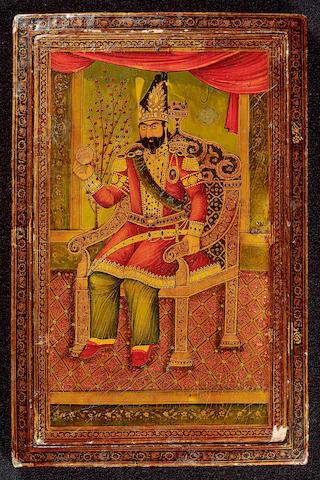 Paintings left by Mohammad Shah Qajar
Paintings left by Mohammad Shah QajarHistorical context:
In 1795, Agha Mohammad Khan was attacked by the Russians while he was busy subjugating the eastern provinces of Iran. As a result, the Shah was forced to retreat to the Caucasus without confirming his sovereignty in eastern Iran, including Herat. The Russians retreated to the Caucasus before this Shah arrived, and Agha Mohammad Khan was killed during this trip.
During the time of Feth Ali Shah, the differences between Iran and Russia about the sovereignty over Georgia led to wars with Iran's defeat in several stages. Following the treaties of Golestan and Turkmencha, many parts of Iran's territory came under foreign rule, and Iran was forced to cede many concessions to Russia. This war also lowered Iran's global image to the level of a weak country with unstable borders and greatly overshadowed Iran's pride.
England, as a European country, gained a lot of interest in colonizing India and considered Iran a strong barrier to prevent Russia from reaching this region. On the other hand, it became known that Tsarist Russia is thinking of reaching the open warm waters in the south of Iran and is considering extending its sovereignty to the territory of Iran. These reasons caused Iran's political scene to be a hotbed for the Russian and British governments during the time of Feth Ali Shah.
Vice Chancellery of Farahani:
When Muhammad Shah came to power, Mirza Abul Qasim, the viceroy of Farahani, who played a very important role in consolidating the throne of this king, returned to Sadrat Azami. But this position did not last long for him and the deputy took actions and reforms in various fields. This issue was not very popular with foreign governments and courtiers, as a result, they made Muhammad Shah slanderous by accusing the chancellor of complicity with the Russians, and Shia clerics turned the public against him by slandering him on the pulpit.
Prohibition of the slave trade in the Persian Gulf:
Slavery had been banned in Britain for nearly two decades, with the increase of British influence in the Persian Gulf, it was decided to end the slave trade through this sea, and the cooperation of neighboring governments such as Iran, Ottoman and Muscat was necessary.
As a result of this issue, Colonel Justin Sheil, who replaced McNeil in 1846, requested Iran to issue a similar decree in a letter he sent to Agassi. Since the buying and selling of human beings was not prohibited in the Islamic religion, the Shah opposed this request with the argument that buying slaves and concubines is in accordance with the sharia of Hazrat Khatam al-Anbiya. The British representative made a lot of efforts to implement his request, among them, we can mention asking the opinions of the mujtahids in Tehran, but they considered the issue to be disgusting and not haram.
In the end, despite Muhammad Shah's opposition, the British opinion sat down and the buying and selling of slaves was banned.
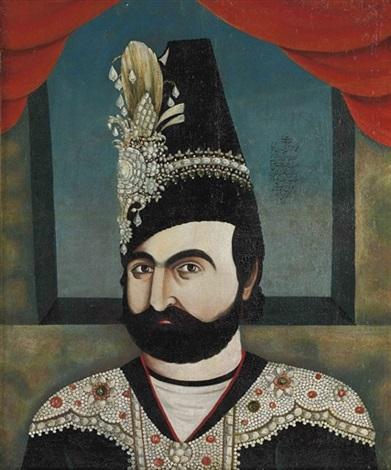 Important events during the reign of Mohammad Shah Qajar
Important events during the reign of Mohammad Shah QajarSuccessor of Mohammad Shah Qajar:
Naser al-Din Shah Qajar succeeded his father Muhammad Shah to the throne.
Death of Mohammad Shah Qajar:
Mohammad Shah Qajar finally died on 14 Shahrivar 1227 due to gout and erysipelas (a serious skin disease). As the news of the king's death spread, there was anarchy in the country. Shah died in Mohammadiye Palace in Tehran and was buried in Hazrat Masoumeh Shrine in Qom.
Until the arrival of Nasiruddin Mirza and his minister Mirza Taqi Khan Amirkabir from Tabriz to Tehran, his mother Mahd Alia took over the government in Tehran.
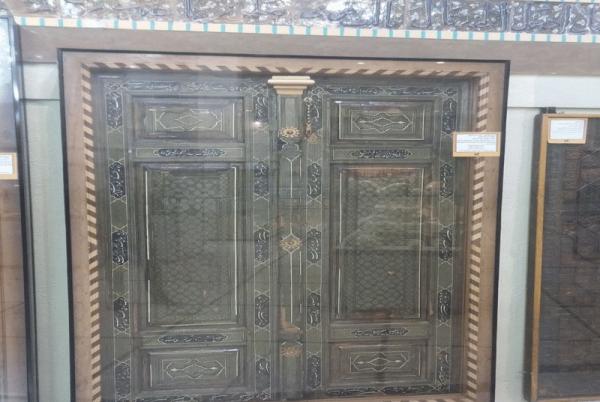 The burial place of Mohammad Shah Qajar
The burial place of Mohammad Shah QajarTomb of Mohammad Shah Qajar:
Among the Qajar kings, Fath Ali Shah and Mohammad Shah are buried in the shrine of Hazrat Masoumeh, and their gravestones were also removed to be kept in the museum. Muhammad Shah's grave is located in a pavilion with a closed door.
compilation: Cover biographical section






